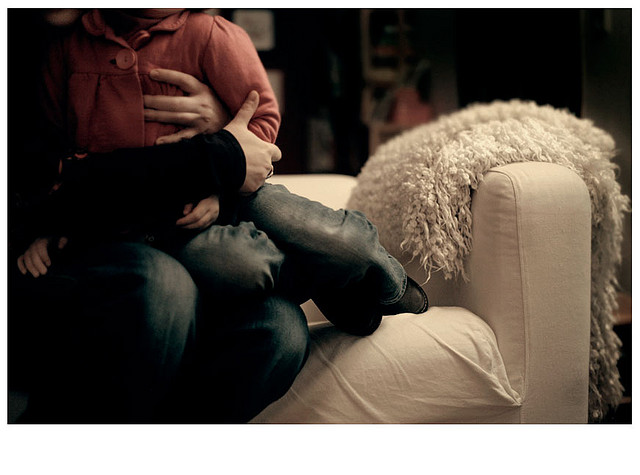While it’s true that many single-parent families (overwhelmingly led by women) are at risk of becoming homeless, the family structure itself isn’t to blame.
Homelessness, as we’ve covered in Homelessness 101, has many causes. These include structural issues (such as lack of affordable housing), systems failure (such as lack of support for newcomers and refugees), and individual factors (traumatic events, break-ups, etc.). Most often, it’s a combination of some or all of these that lead to all types of homelessness, and poverty is almost always a major contributor.
Causes of family homelessness
 When it comes to family homelessness, a report by the Social Planning and Research Council of B.C found that the main causes of family homelessness were: “a lack of affordable housing, poverty, family violence and inadequate funding for social programs.”
When it comes to family homelessness, a report by the Social Planning and Research Council of B.C found that the main causes of family homelessness were: “a lack of affordable housing, poverty, family violence and inadequate funding for social programs.”
Single mothers are particularly at risk for many reasons, including:
Mothers are more likely to be poor
A 2009 YWCA report discusses the fact that women are disproportionately represented in the low-income bracket. 70% of Canadian women work part-time and women make up two thirds of the workforce earning minimum wage. The report also stated: “With the highest levels of working mothers in our history, 36% of mother-led families still have incomes below the poverty line and 43% of children living in a low-income family live with a single, female parent. The median income for single moms is more than a third lower than for single dads.” As a result, women are more vulnerable to changes in social service provision and the economy.
Similarly, the Women in Canada: A Gender-Based Statistical Report showed that:
- Women are more likely to work part-time than men
- 67% of employed women are concentrated in traditionally “feminine” occupations, which tend to pay less than masculine occupations
- Unemployed women are more likely than unemployed men to leave their jobs for personal or family responsibilities
There are many reasons why women are clustered in low-paying jobs. As noted by the Canadian Women’s Foundation: “Canada’s lack of affordable childcare—and the lack of workplace policies such as flex-time and caregiver leave—often forces women into career choices that severely limit their earning power.”
This is especially true for racialized, immigrant and Aboriginal women, who face additional discrimination. Emily Paradis’s report on housing issues in Toronto’s aging high rises found that racialized, immigrant and single-parent families (almost all with a single mother) were most at risk of major housing problems. These families are also more likely to face discrimination in looking for new housing and employment.
Violence remains a large contributor to homelessness
According to Statistics Canada, police-reported family violence was estimated to affect 2 million Canadians in 2011. Of this population, 69% of the victims were women and girls. For spousal violence, women represent 80% of victims.
Research on Canadian women’s shelters found that as many as three quarters of women visiting the shelters have been the victims of abuse. A large majority, 2 out of 3 women, were fleeing current spouses or partners.” Back in March, Issac covered this subject extensively in a post about women and shelter use:
“While 100,000 women and children use shelters, this is estimated to only account for 10% of women who leave their homes due to abuse. The lack of affordable housing and other accommodations is one of the chief reasons that women and their children return to abusive relationships, exposing themselves to further violence. Almost half of the women admitted to emergency shelters were with their children. The women wanted to protect their children from witnessing the abuse they were experiencing, and protect them from psychologically or physically abusive situations. Despite these high numbers, only 25% had reported the abuse to police, and 16% had laid charges.”
Youth homelessness
Some people think single-parent homes contribute to youth homelessness, but this isn’t the case either. As noted in our State of Homelessness in Canada 2013 report: “They typically come from homes characterized by family conflict of some kind (including in some cases physical, sexual and emotional abuse), disruptions to school and family life, neglect and poverty.”
LGBTQ2 youth are overrepresented among the homeless population in Canada, many fleeing homes or environments that are discriminatory. 1 in 5 youth in Toronto's shelter system identify as being LGBTQ2— more than twice as many identified LGBTQ2 as in the city’s general population. This speaks to intolerance and family conflict more than the family structure itself.
Moving forward
Though it may be tempting to blame single parents for their circumstances, there are many structural problems that put them at risk of poverty and homelessness. No one solution or family structure can prevent it, but as Tanya wrote a few weeks ago in her post about prevention: “Poverty reduction strategies, anti-violence campaigns, early childhood supports and anti-discrimination work all can contribute to a reduction in homelessness down the road.”
This post is part of our Friday "Ask the Hub" blog series. Have a homeless-related question you want answered? E-mail us at thehub@edu.yorku.ca and we will provide a research-based answer.
Photo credit: mattwi1s0n on Flickr
- See more at: http://homelesshub.ca/researchmatters#sthash.i8IWLuCH.dpuf
This post is part of our Friday "Ask the Hub" blog series. Have a homeless-related question you want answered? E-mail us at thehub@edu.yorku.ca and we will provide a research-based answer.
Photo credit: Sandrine Derselle on Flickr

